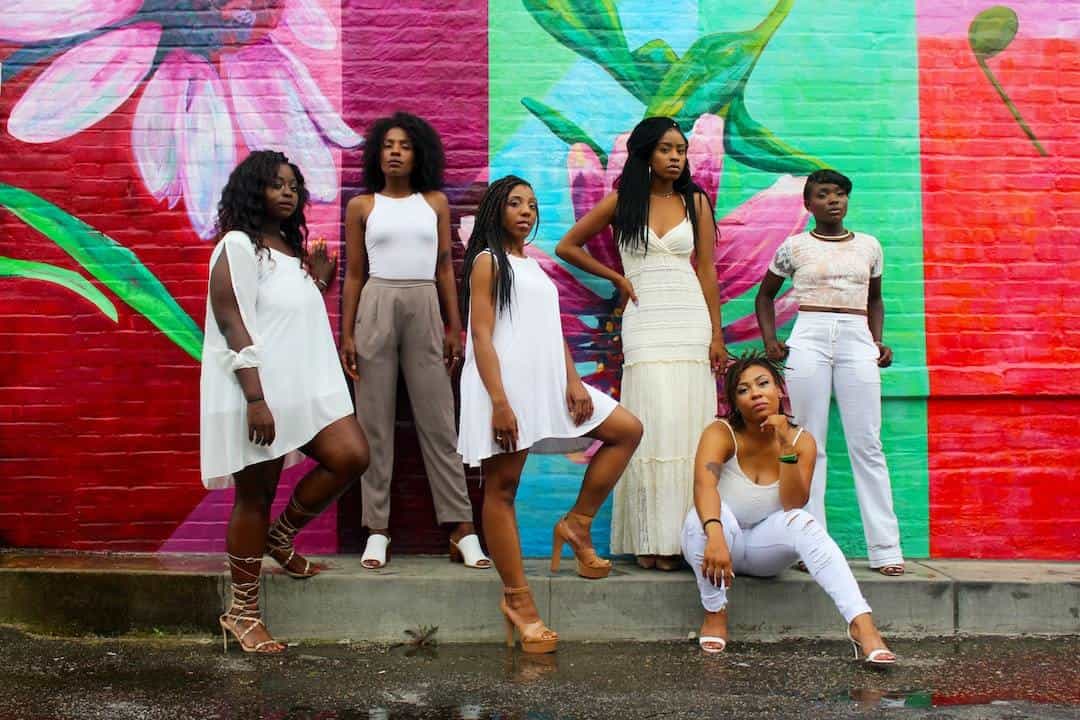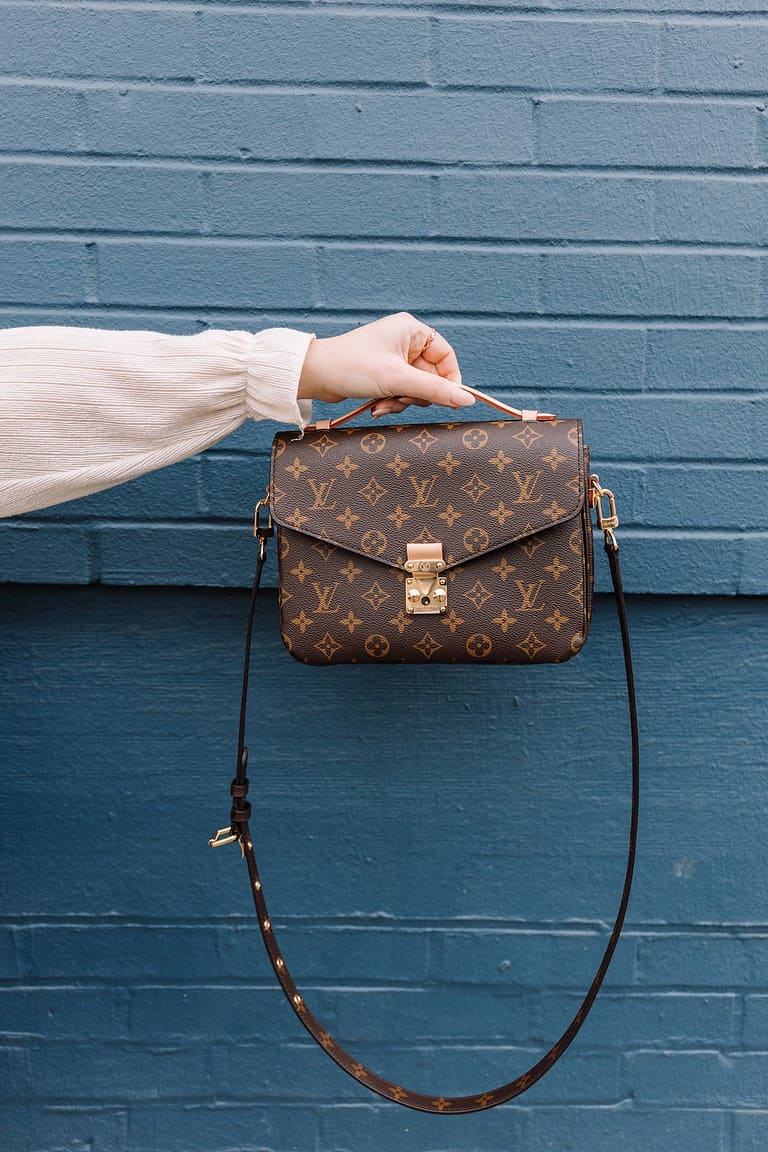Cultural Appropriation in Fashion: Identifying the Boundary
Have you ever found yourself standing in front of a mirror, donning an outfit inspired by a culture that isn’t your own and wondering – Cultural Appropriation in Fashion: Where Do We Draw the Line?
Picture this. You’re at your favorite fashion store. An eye-catching garment with intriguing heritage prints or dyeing techniques draws you in. The vibrant colors reflect rich cultural stories woven into fabric threads.
You’re tempted to buy it, but then pause… Is wearing this celebrating or appropriating someone else’s culture? Does appreciation cross over into appropriation when fashion lines profit from minority group designs without giving due credit?
Intriguing questions indeed!
This post unravels these complexities and dives deep into instances where well-intentioned appreciation becomes controversial appropriation; fostering understanding about power dynamics between dominant groups and marginalized communities.
Sign up for our newsletter to stay ahead of the curve
Unraveling the Complexities of Cultural Appropriation in Fashion
- Unraveling the Complexities of Cultural Appropriation in Fashion
- Ethical Fashion’s Encounter with Cultural Appropriation
- Tracing Instances of Cultural Appropriation in Historical and Contemporary Fashion
- The Consequences and Implications of Cultural Appropriation in Fashion
- Navigating the Thin Line Between Appreciation and Appropriation
- Fashion Industry’s Role in Addressing Cultural Appropriation
- FAQs in Relation to Cultural Appropriation in Fashion: Where Do We Draw the Line?
- Conclusion
Unraveling the Complexities of Cultural Appropriation in Fashion
The world of fashion is a colorful tapestry, borrowing and blending elements from different cultures. But sometimes, this blending crosses over into cultural appropriation, causing damage to marginalized communities.
The Fluid Nature of Cultural Appropriation
Cultural appropriation vs cultural appreciation: where do we draw the line? It’s like attempting to seize a fog with your ungloved hands. This boundary shifts constantly as culture itself morphs through time and space. For instance, what might seem an innocent homage at one point could be seen as disrespectful misappropriation under a different light.
A look at the significance of heritage motifs in fashion reveals how tricky this can get. Heritage motifs carry profound meaning for their original people – it’s more than just clothing styles or box braids; it’s about history, identity, and struggle. When these symbols are lifted without context by dominant groups such as big-name fashion brands or white women wearing black hairstyles – that’s when appreciation turns sour.
The Rule Of The Three S’s
But how do you tell if something has crossed over into cultural appropriation territory? Meet Professor Susan Scafidi’s “rule of three S’s: source, significance and similarity”. According to her theory:
- If you take from a minority group (source)
- You grab hold of something meaningful within that culture (significance), and
- Your design closely mimics its original form (similarity).
Then congratulations, you’ve landed yourself smack dab in the middle of cultural appropriation. This rule isn’t perfect but it’s a start.
The power dynamics involved here can’t be ignored either. Cultural elements are often borrowed by those from more powerful cultures – think Elvis Presley and rock n’ roll or Kylie Jenner with cornrows – which perpetuates inequality and erases indigenous communities’ contributions.
traditional Mexican blouses. It’s important to remember, however, that appreciation can cross into appropriation if not handled with care and respect. Let’s strive for a fashion industry where cultural exchange is celebrated without exploitation.
But remember, understanding cultural appropriation isn’t as simple as checking boxes. It’s a complex process that demands sensitivity and awareness from us all. We need to recognize the significance of these elements within their original cultures and respect it. Let’s continue learning together.
Ethical Fashion’s Encounter with Cultural Appropriation
When we contemplate ethical fashion, sustainability is typically the first concept that comes to mind. However, even in this conscious sphere, there are grey areas like cultural appropriation that often get overlooked.
The good news? We’re not doomed to a future of style stagnation. By acknowledging inspiration sources and ensuring benefits flow back to these communities, ethical brands can maintain their integrity while keeping our wardrobes vibrant.
Ethical Brands’ Responsibility towards Indigenous Art
Take Just Fashion’s stance on sustainability, for instance. Their approach isn’t just about eco-friendly materials or fair trade principles; they also take pains to respect indigenous art forms.
This appreciation extends beyond simply using traditional patterns in designs. Instead, it involves an active partnership where artists receive due recognition and compensation for their work.
As detailed by The Good Trade, true inclusion means providing space for marginalized voices within the industry—rather than merely borrowing from them without credit or consent.
Maintaining Respect While Drawing Inspiration
Weaving diverse threads into global fashion doesn’t mean blindly appropriating elements without understanding their significance. To do so would be akin to rocking up at a music festival wearing tribal tattoos as body paint—you might love the aesthetic but completely miss its spiritual importance.
- Avoid stereotypes: Native American headdresses aren’t everyday wear—they’re sacred ceremonial items. So let’s not turn them into festival accessories, shall we?
- Pay fair prices: When you buy that gorgeous ikat scarf from a local artisan, make sure it’s at a price that reflects the skill and time invested.
- Credit sources: If your bag plaid design was inspired by traditional Scottish tartans—say so.
This isn’t about creating fashion police but rather fostering an environment of respect. It’s about appreciating art forms without reducing them to exotic novelties or denying their creators rightful recognition.
Encouraging Conscious Consumption
by becoming more aware of the origins and significance of the styles we wear. Let’s be inquisitive, investigate, and make decisions with knowledge. Let’s support designers who respect cultural heritage instead of exploiting it.
Respecting cultural heritage in ethical fashion isn’t just about sustainability, but also avoiding appropriation. Brands like Just Fashion show how to appreciate indigenous art through partnership and fair compensation. By understanding the significance of different elements, paying fair prices for artisan work, crediting sources of inspiration, and making conscious consumption choices, we can maintain style vibrancy without reducing cultures to mere exotic novelties.
Tracing Instances of Cultural Appropriation in Historical and Contemporary Fashion
Fashion is a powerful tool for self-expression. Yet, it’s not uncommon to see fashion brands accused of cultural appropriation. One striking example involves Meüne, a brand caught in the crossfire over its use of heritage motifs.
Meüne Controversy: A Case Study
Renowned for its edgy designs, Meüne found itself embroiled in controversy when it incorporated traditional textile heritage into its collections. Critics argued that this was more than just an appreciation for global art forms; they saw it as outright cultural theft.
The line between borrowing from another culture out of admiration and exploiting minority cultures without their consent is often blurry. In the case study of Meüne, we can learn much about how easily fashion stores fall prey to appropriating art forms under the guise of inspiration.
A look back at historical examples shows that these instances are not new but rather part and parcel with human history – both ancient times’ clothing styles like togas or tunics adopted by modern high-end designers reflect how pervasive this issue has been throughout time.
In recent years though, public awareness on such matters increased thanks to social media platforms amplifying voices previously unheard within mainstream discourse about issues related specifically towards minorities whose traditions get misused by major corporations seeking capital gains through what many deem exploitative practices based purely upon profit motives instead respect towards original people behind those unique aspects being appropriated today.
Navigating Through The Backlash
The backlash against such blatant acts makes one thing clear: appropriation matters. This was the case when Meüne, under pressure from critics and consumers alike, decided to make amends.
They acknowledged their design process had crossed a boundary. So, they began looking for ways to respect the original artists of the heritage styles featured in their fashion lines. This meant reaching out directly to these communities and making sure they saw some benefits too – an effort to transform past mistakes into positive action.
unheard voices. Now, social media is letting these concerns be heard louder than ever before. It’s a reminder that while fashion can serve as a powerful tool for cultural exchange, it must always respect and acknowledge the origins of the styles it borrows.
The Consequences and Implications of Cultural Appropriation in Fashion
Picture this: a major fashion brand launching its latest collection, parading models down the runway donned in sacred symbols from indigenous cultures. Sounds like cultural appreciation, right? Not quite.
When we peel back the layers, it’s clear that cultural appropriation perpetuates inequality, commodifying elements of marginalized communities’ heritage without their consent. Rather than being a respectful homage, cultural appropriation is more often about exploiting marginalized communities’ heritage for monetary gain.
Unjust Power Dynamics Fostered by Cultural Appropriation
In our world where dominant groups often hold sway over what becomes trendy or mainstream, they’re able to leverage cultural elements for profit while the original people remain overlooked – or worse – stereotyped. This is seen vividly when high-end brands exploit minority group’s heritage motifs only to sell clothing styles at exorbitant prices with no acknowledgment or benefits going back to those very communities.
Research conducted by The European Union Agency for Fundamental Rights suggests an alarming trend of systemic marginalization experienced by Roma communities across Europe who are victims of such practices. So why does this matter?
Cultural appropriation not only fuels stereotypes but also reinforces power dynamics between dominant groups and marginalized ones—it tells us who gets recognized and rewarded (and who doesn’t) within society’s pecking order.
A quick peek into history reminds us how music icon Elvis Presley got massive acclaim for his song “Lawdy Miss Clawdy”, which was heavily influenced by black culture—yet many pioneering African American musicians languished in obscurity during that same era due to racial bias—a classic example illustrating these power dynamics.
Fast forward to today, we see similar patterns. Ever heard of Kylie Jenner’s infamous box braids controversy? Or the backlash Stella McCartney faced for using African prints without acknowledging their roots? These incidents reveal a deeper issue—the commodification of cultural elements in fashion by those who hold more societal power.
This exploitation can sometimes result in erasure. That’s a serious issue where, over time, culturally significant symbols might get wiped out.
Picture this: a major fashion brand showcasing indigenous cultural symbols as part of their latest collection. It seems like appreciation, but it’s actually appropriation – using elements from marginalized communities for profit without consent or acknowledgment. This practice fuels stereotypes and reinforces unjust power dynamics, often leading to the erasure of culturally significant symbols over time.
Navigating the Thin Line Between Appreciation and Appropriation
The fashion industry often walks a tightrope between cultural appreciation and appropriation. Understanding this balance is essential to respect for cultural ownership, which should be at the heart of any design process.
The Rule Of Thumb In Determining Cultural Appropriation
There’s no magic formula for distinguishing between respectful inspiration and misappropriation. However, we can use certain guidelines as our compass.
A good rule of thumb in determining cultural appropriation is acknowledging whether there’s an element of disrespect or exploitation involved. If your chic tote plastic bag with plaid prints has its roots in West Africa but doesn’t credit local ikat weavers nor contribute to their welfare, you might want to reconsider that accessory.
This extends beyond physical items too – hairstyles like box braids or clothing styles such as huipil dresses shouldn’t just be picked up because they’re “trendy.” They’re tied deeply into people’s identities and histories – taking them without understanding could easily lead down the path towards unintentional harm.
Fashion Globetrotters: Treading Lightly on Cultural Grounds
In today’s interconnected world, it’s easy for fashion globetrotters to inadvertently stumble over boundaries when drawing from different cultures’ textile heritage. Aspiring designers should always do their homework before incorporating another culture’s symbols into their work pant designs or summer back styles. The last thing anyone wants is to cause offense through ignorance – right?
If you’re keen on using border designs inspired by South Asian art forms but aren’t sure if it crosses a line—ask someone who belongs to that community. Consulting those directly connected ensures sensitivity while simultaneously educating yourself about these precious heritages.
Moving Towards More Conscious Fashion
It’s time we make sure the fashion industry stands on the right side of cultural appreciation rather than appropriation. Fashion companies need to step up, educate themselves and their customers about where they’re drawing inspiration from.
It’s crucial to understand that these heritage styles are more than just attractive designs. They’re intimately connected with people’s identities and their pasts. Therefore, it might seem harmless to adopt a gypsy style, but we need to consider the deeper implications.
insight and guidance. They can help you avoid unintentional harm or offense, ensuring your designs reflect cultural appreciation, not appropriation. It’s all about maintaining respect for the cultures we draw inspiration from while creating unique, respectful fashion statements.
Fashion Industry’s Role in Addressing Cultural Appropriation
The fashion industry has a vital role to play when it comes to addressing cultural appropriation. After all, we’ve seen how the western fashion impact on cultural heritage can sometimes be less than stellar.
So, what’s needed? First off, let’s get real about diversity. Fashion companies taking a stand against cultural appropriation isn’t just about being “woke”. It is essential for promoting inclusivity and respect towards cultures worldwide.
Diversity in the spotlight:
- Fashion brands need to employ designers from various backgrounds, ensuring minority groups have representation within these influential spaces.
- Promoting diversity also extends beyond employment practices; incorporating diverse models and styles into their lines sends out a powerful message of acceptance and appreciation rather than exploitation.
A Seat at The Table: Involving Original Cultures
We don’t want our favorite brands acting like some bad guest at a potluck – showing up empty-handed but filling their plate with everyone else’s dishes. A surefire way for them not getting invited again.
Including representatives from the original culture during the design process is crucial – this helps ensure authenticity while avoiding offensive or inappropriate use of sacred symbols or designs.
This approach could help mitigate controversies such as those faced by Isabel Marant over her unauthorized use of indigenous Mexican patterns or Stella McCartney with her ankara prints debacle. But remember folks, consultation doesn’t mean tokenism. Brands should aim for meaningful involvement that benefits both parties equitably.
Credit Where Credit Is Due
Just as you wouldn’t pass off your mom’s famous lasagna recipe as your own at a dinner party, the same applies to using cultural elements in fashion. Always give credit.
Acknowledging the source of inspiration goes beyond mere lip service – it can help preserve cultural heritage and educate consumers about different cultures. After all, each piece has its story, and telling that tale is just good manners.
Economic Empowerment: Profits with Principles
more than that. Fashion is a form of self-expression, an art medium and a way to communicate without words.
Addressing cultural appropriation in fashion isn’t about jumping on the “woke” bandwagon. It’s about promoting respect and inclusivity for cultures worldwide. Brands need to champion diversity, involve representatives from original cultures during design processes, give due credit when using cultural elements, and drive economic empowerment with principled profits.
FAQs in Relation to Cultural Appropriation in Fashion: Where Do We Draw the Line?
Where do you draw the line between cultural appreciation and appropriation?
The boundary lies in respect, consent, and credit. Appreciation values a culture without exploiting it or reducing its elements to stereotypes.
What is the line of cultural appropriation?
Cultural appropriation happens when one culture borrows from another without understanding or respecting their customs, history, or significance—often for profit.
What is an example of cultural appropriation in fashion?
A classic case was Victoria’s Secret’s use of Native American headdresses on runways—a misuse of sacred indigenous symbols.
What are the three S’s of cultural appropriation?
Susan Scafidi coined “the three S’s”: Source (a disadvantaged group), Significance (deeply meaningful elements), and Similarity (copying that mimics authentic items).
Conclusion
Deciphering the fine line between cultural appreciation and appropriation in fashion is no small feat. We’ve seen how fluid this concept can be, changing over time and space.
We explored Susan Scafidi’s “rule of three S’s” (source, significance, similarity) as a guiding light to navigate these murky waters. It’s crucial for us to respect other cultures while expressing our style.
Even ethical brands aren’t exempt from unintentional missteps. They need to work responsibly with indigenous art forms and honor their sources.
The Meüne controversy underlines the consequences of appropriating textile heritage without consent – it erodes community rights and fuels inequality.
In understanding Cultural Appropriation in Fashion: Where Do We Draw The Line?, we must remember that it’s not about curtailing creativity but fostering mutual respect and equitable exchange among diverse cultures. Let’s make sure our wardrobe choices echo those values!






